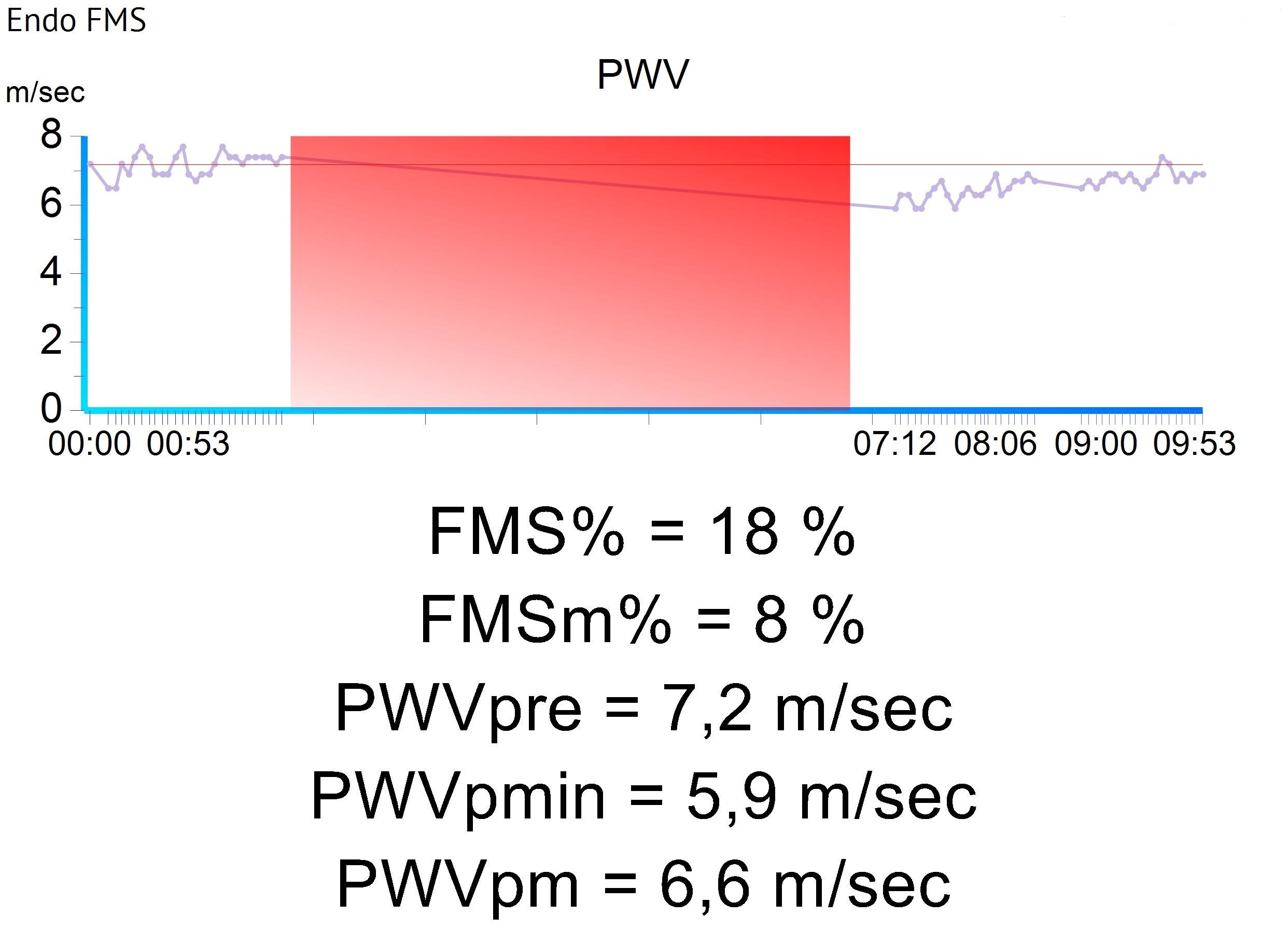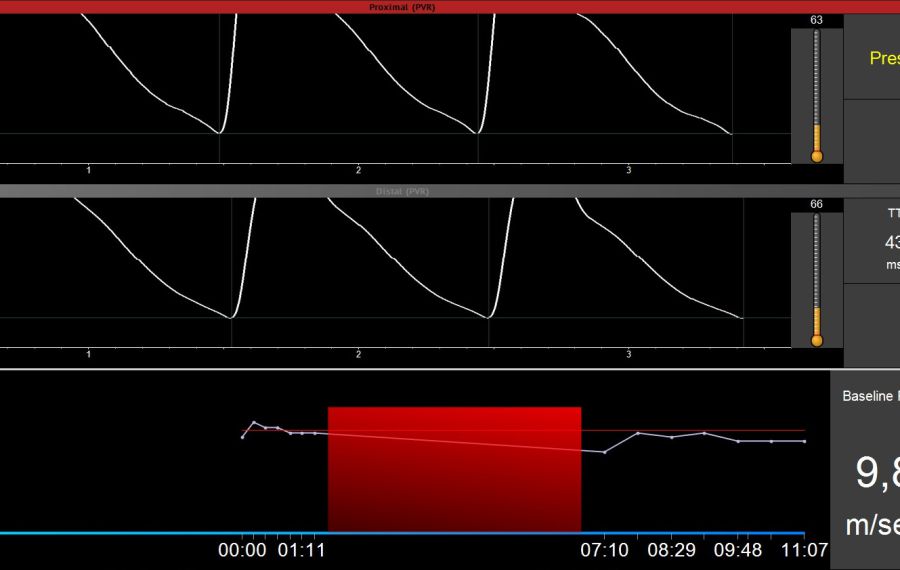Flow Mediated Slowing FMS
FMS Testing Procedure
Flow Mediated Slowing or FMS testing mimics the FMD test procedure leveraging on its underlying physiological principles. While post-occlusive hyperemia leads to NO activated tone modulation and vessel diameter increase, pulse wave velocity (PWV) in the stimulated limb decreases. As PWV is inversely related to Distensibility, a widening of brachial artery cross section will cause a drop in brachial PWV. The coupling of acute flow-mediated relaxation of conduit artery tone with PWV reduction or “slowing” in both arms and legs – independent from blood pressure, was documented [9]. Post-occlusive brachial hyperemia, induced flow-mediated slowing of bPWV, is measured between the wrist and the upper arm. In normal healthy subjects the immediate drop from pre-occlusive levels is quite significant (up to 20%) and sustained at an 8-10% level for up to 10 min. Whereas in patients with cardio-vascular disease, where endothelial function and flow-mediated vasodilation are known to be compromised, the PWV slowing (FMS) is substantially reduced, particularly when observed over a longer post-occlusive phase of some minutes. It was also shown that administration of vaso-active agents in the brachial artery was leading to an ipsilateral PWV slowing, while the simultaneously measured PWV on the contralateral side remained unaffected [10].
While relying on the proven FMD testing procedure by applying a brachial occlusion, the FMS test does neither require expensive imaging equipment nor the expertise of a physician or skilled ultrasound technologist but more importantly is entirely operator independent, making it an inexpensive and reproducible exam which can be applied not only in special labs but virtually anyplace.


